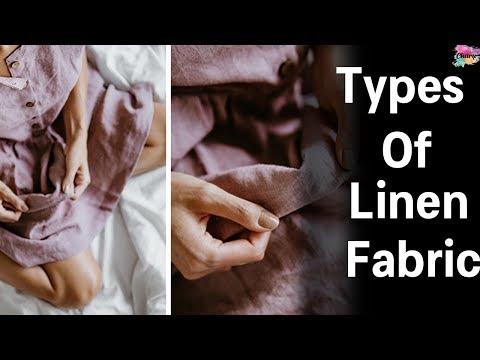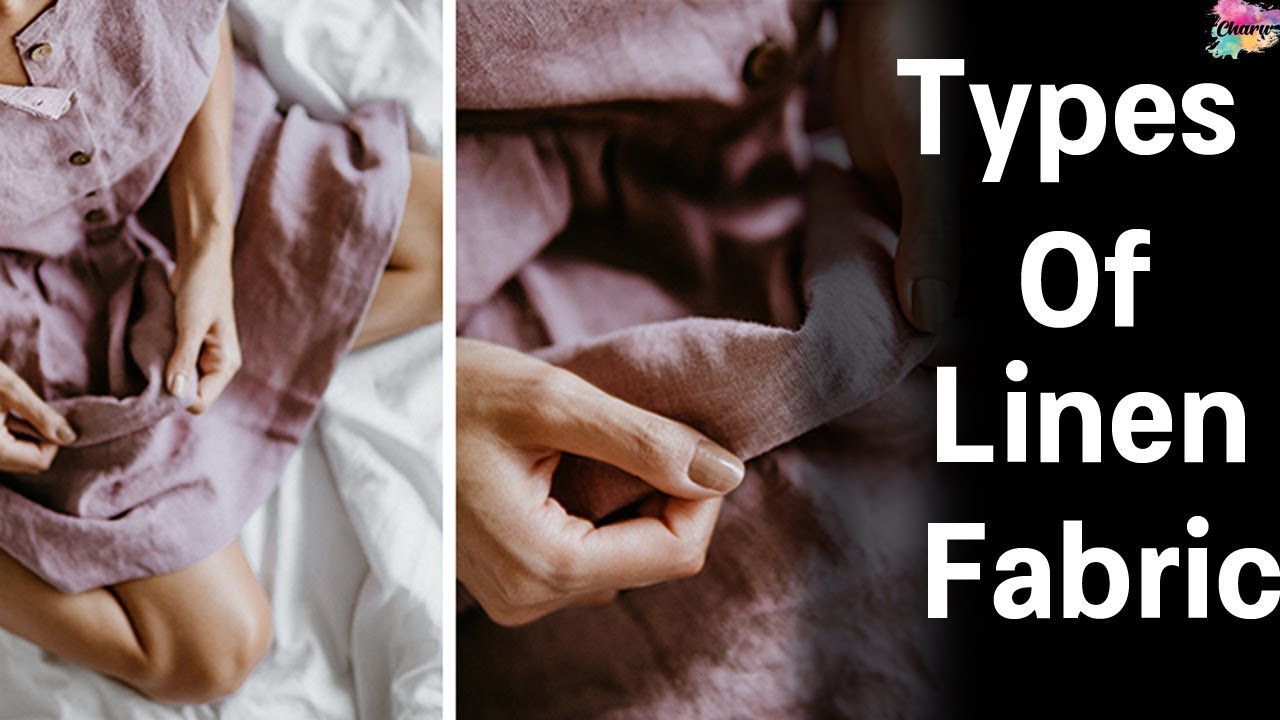Linen fabric is known for its exceptional qualities and versatility, making it a popular choice among fashion designers, interior decorators, and individuals seeking high-quality textiles. One of the most fascinating aspects of linen is its diverse range of types, each with its own unique characteristics and benefits. Whether you’re looking for a lightweight and breathable option for summer garments or a durable and textured fabric for home furnishings, linen has got you covered. Plain-weave linen, with its simple yet elegant structure, offers a smooth and lustrous surface that lends itself well to a variety of applications. For those seeking a more textured and rustic feel, herringbone linen presents a distinctive zigzag pattern that adds depth and visual interest to any design. If you desire a more luxurious and refined look, damask linen is an excellent choice, featuring intricate and elaborate patterns that exude sophistication. Linen fabrics are not only aesthetically pleasing but also possess exceptional functional properties. They are highly absorbent, providing excellent moisture-wicking properties, which makes them ideal for hot and humid climates. Additionally, linen is known for its natural hypoallergenic and antibacterial properties, making it a great option for those with sensitive skin or allergies. With its timeless appeal and impressive range of types, linen fabric continues to captivate and inspire designers and enthusiasts alike.

The Many Types of Linen Fabric
When it comes to choosing the perfect fabric for clothing, home décor, or other textile applications, linen is often a popular choice. Linen is a versatile and durable fabric that offers a range of benefits, making it suitable for various uses. In this article, we will explore the different types of linen fabric and their unique characteristics.
1. Plain Linen
Plain linen is the most basic and widely used type of linen fabric. It is made from the fibers of the flax plant and is known for its natural and breathable properties. Plain linen is lightweight and comfortable, making it ideal for clothing items such as shirts, dresses, and trousers. Due to its versatility, plain linen is also frequently used for household textiles like tablecloths, napkins, and curtains.
2. Damask Linen
Damask linen is a type of fabric that features intricate patterns woven into the material. The patterns can range from simple geometric designs to more elaborate motifs. Damask linen is commonly used for table linens, upholstery, and decorative items. Its elegant and luxurious appearance adds a touch of sophistication to any setting.
3. Herringbone Linen
Herringbone linen is a variation of plain linen that showcases a distinctive V-shaped weaving pattern. The pattern resembles the bones of a herring fish, hence the name. This type of linen fabric is highly durable and has a unique texture that adds visual interest to garments and home textiles. Herringbone linen is often used for jackets, skirts, and blankets.
4. Sheer Linen
Sheer linen is a lightweight and semi-transparent fabric that is perfect for creating delicate and airy garments. This type of linen is commonly used for summer dresses, blouses, and curtains. Sheer linen allows for excellent breathability and comfort, making it a popular choice for warm weather clothing.
5. Upholstery Linen
Upholstery linen, as the name suggests, is specifically designed for furniture upholstery. It is a heavy-duty fabric that can withstand daily use and is resistant to stains and fading. Upholstery linen is available in a wide range of colors and patterns, allowing for endless design possibilities. This type of linen fabric adds a touch of elegance and durability to sofas, chairs, and other furniture pieces.
Regardless of the type of linen fabric you choose, it is important to care for it properly to ensure its longevity. Linen fabrics should be washed in cold water and ironed while slightly damp to maintain their crisp and smooth appearance. Additionally, it is recommended to avoid using bleach or harsh chemicals that may damage the fabric.
In conclusion, linen fabric offers an array of options for various applications. From plain linen for everyday clothing and household textiles to damask linen for a touch of elegance, there is a type of linen fabric to suit every need. Whether you are looking for lightweight and sheer fabrics or heavy-duty upholstery materials, linen is a versatile choice that combines style, durability, and comfort.
So, next time you are considering a new fabric for your next project, don’t overlook the many wonderful options that linen has to offer.
“Luxurious Linens: Unveiling the Many Varieties”
Video Source : Charu Creation Pvt. Ltd.
Types of Linen Fabric
Types of Linen Fabric
| Fabric Type | Description | Usage |
|---|---|---|
| Plain Weave Linen | Plain weave linen is the most common type, with a simple over-under pattern. It’s lightweight, breathable, and has a smooth surface. This fabric is highly versatile and widely used in clothing, home decor, and accessories. | Plain weave linen is perfect for summer clothing, such as dresses, blouses, and shirts. It’s also popular for tablecloths, napkins, and curtains due to its elegant appearance. |
| Herringbone Linen | Herringbone linen is characterized by a distinctive V-shaped pattern, resembling the bones of a herring. It has a slightly heavier weight and more texture compared to plain weave linen. This fabric is known for its durability and exceptional draping qualities. | Due to its durability, herringbone linen is often used for upholstery, such as chairs and sofas. It’s also popular for tailored garments like blazers and suits, as well as decorative pillows and curtains. |
| Handkerchief Linen | Handkerchief linen, also known as batiste, is an incredibly lightweight and delicate fabric. It has a loose weave, making it sheer and airy. This fabric is prized for its exquisite drape and softness. | Handkerchief linen is commonly used for delicate garments like blouses, lingerie, and summer dresses. It’s also favored for heirloom sewing, embroidery, and fine handkerchiefs. |
| Toweling Linen | Toweling linen is a heavier weight fabric, specifically designed for absorbency and durability. It has a looser weave and a slightly rough texture, making it ideal for towels and other household linens. | Toweling linen is mainly used for kitchen towels, bath towels, and washcloths. Its absorbent properties make it perfect for drying dishes and wiping surfaces. |
| Canvas Linen | Canvas linen is a sturdy and heavyweight fabric with a tight weave. It has a rough texture and excellent durability. This fabric is often used for heavy-duty applications where strength and resilience are required. | Canvas linen is commonly used in upholstery, tote bags, backpacks, and outdoor accessories like cushions and sunshades. It’s also a popular choice for artists as a painting surface. |
Note: Linen fabrics are highly versatile and can be blended with other fibers, such as cotton or silk, to enhance specific characteristics. The above-mentioned linen fabric types are just a few examples of the extensive range available to cater to various needs and preferences.

